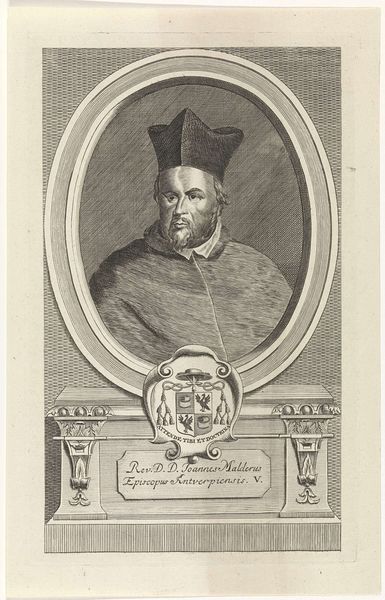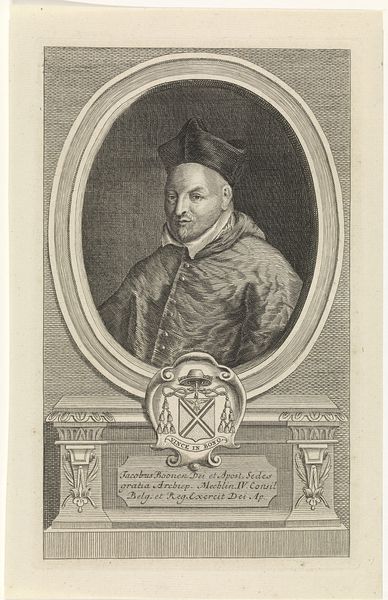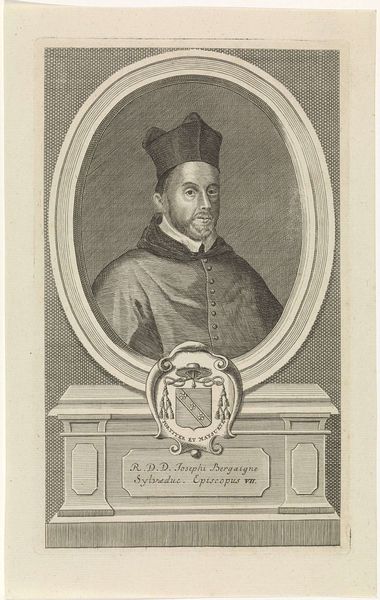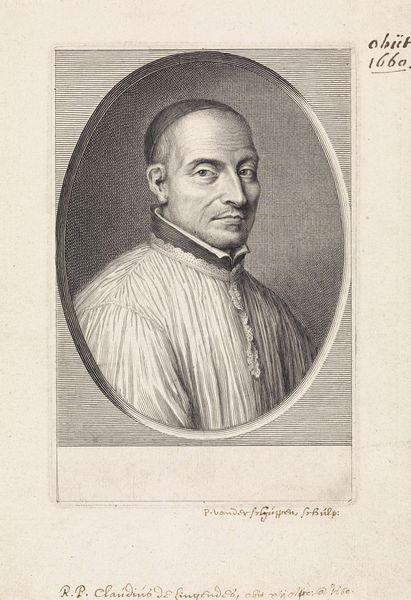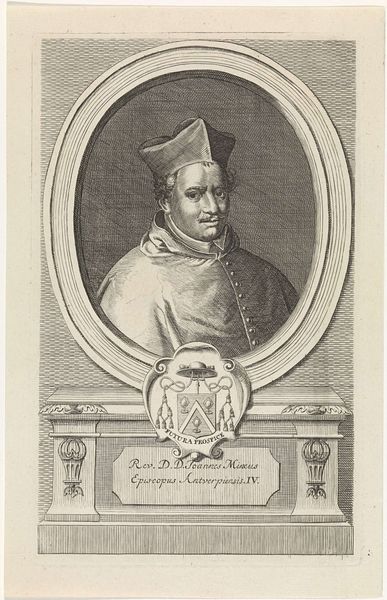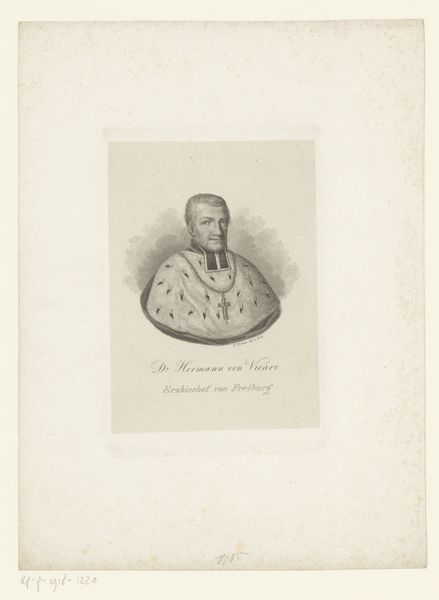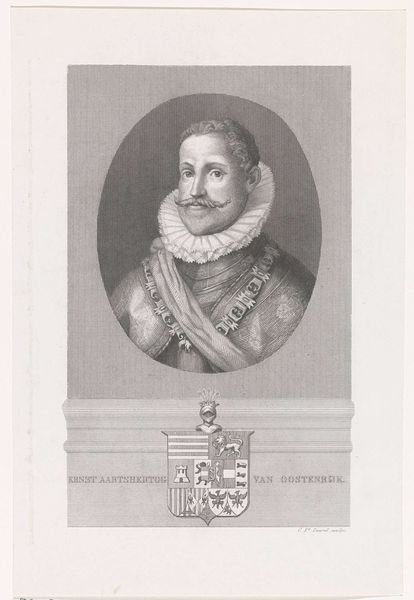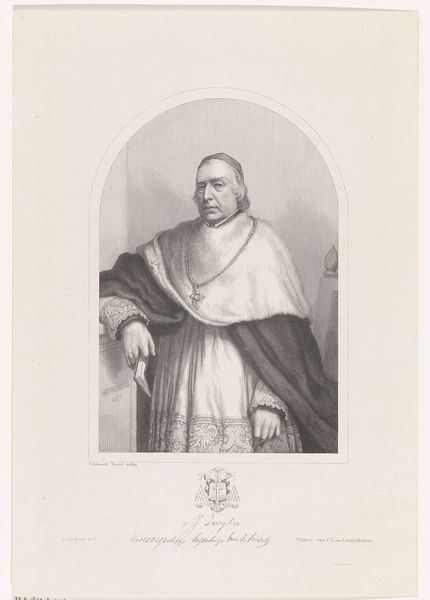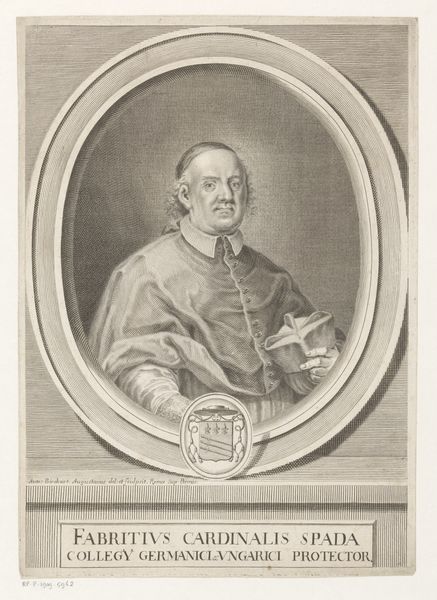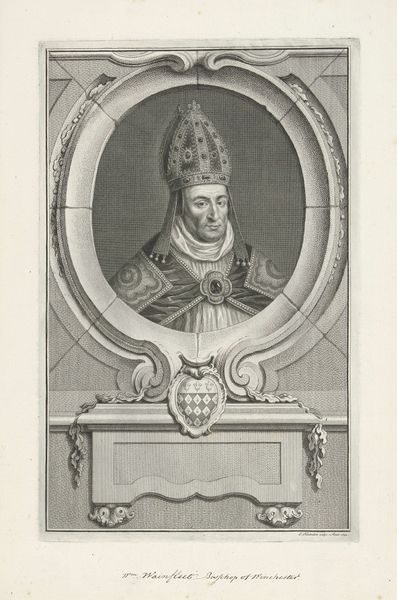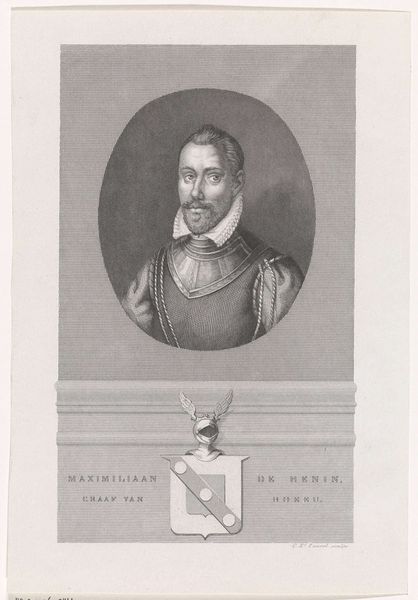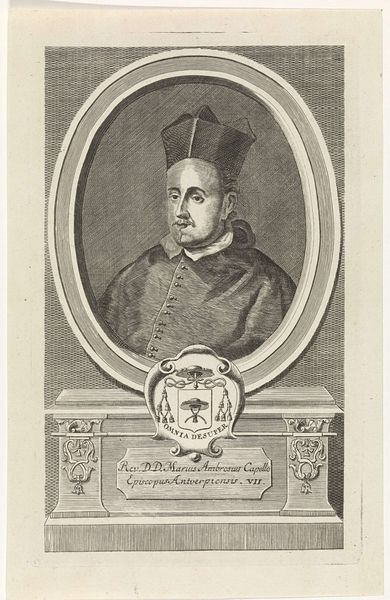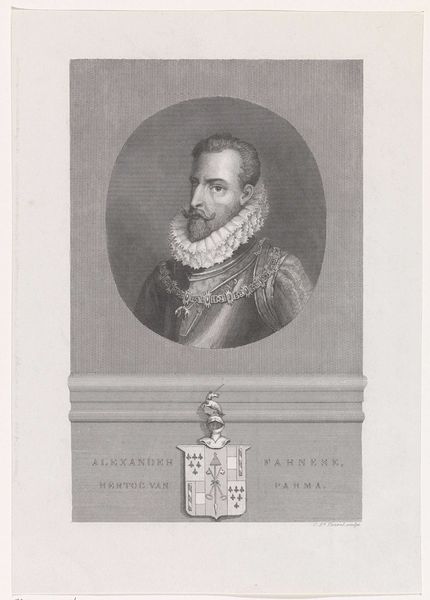
Dimensions: height 250 mm, width 175 mm
Copyright: Rijks Museum: Open Domain
Editor: Here we have an engraving, "Portret van Jacob Boonen, aartsbisschop van Mechelen" created sometime between 1841 and 1879 by Edouard Taurel, now residing in the Rijksmuseum. The detail achieved with this printing technique is amazing. What can you tell me about this portrait? Curator: This engraving serves as a window into the complex relationship between religious authority, visual representation, and public perception in 19th-century Europe. These portraits helped legitimize the authority and social standing of important people like Boonen. Have you considered how its style ties it to Baroque ideals? Editor: I see what you mean! The use of line, even though it is engraving, creates drama, depth, and grandeur – key characteristics of the Baroque style. How would this image have functioned in society? Curator: It's probable this would have been reproduced for wide circulation. Prints like these served not just as depictions, but also as instruments for shaping public memory and reinforcing hierarchies. Considering its creation in the 19th century, does the Baroque influence speak to something larger about societal power structures at the time? Editor: Absolutely! It points to a nostalgia or longing for a time of established authority, perhaps amidst social upheaval. The church trying to claim some authority. It's interesting to see the deliberate revival of a historical style for a specific purpose. Curator: Exactly. So, what did you learn from this image? Editor: I've gained a greater understanding of how historical context shapes the creation and interpretation of art. Thanks! Curator: Likewise! Thinking about the societal impact really enriches my understanding as well.
Comments
No comments
Be the first to comment and join the conversation on the ultimate creative platform.
